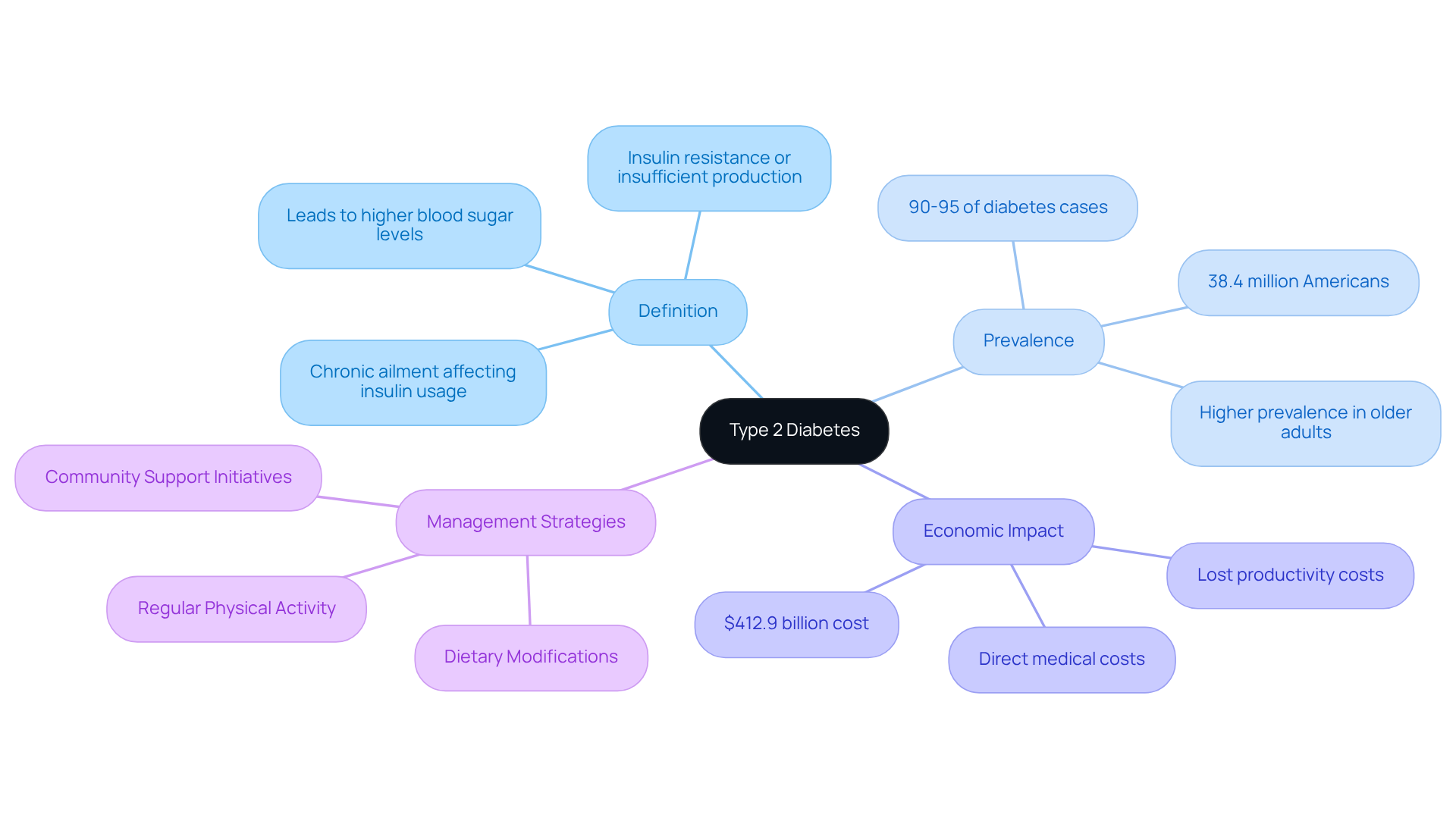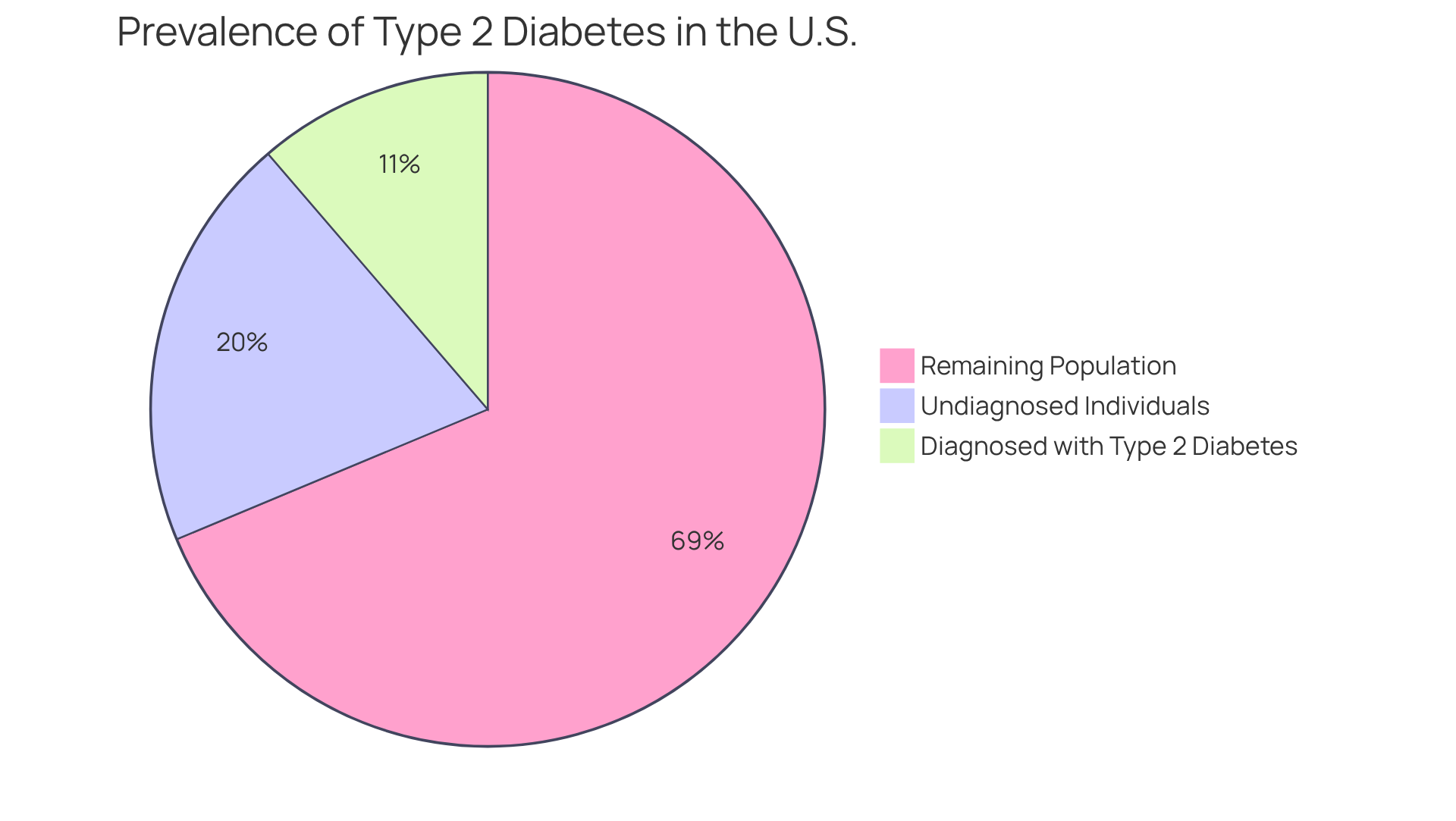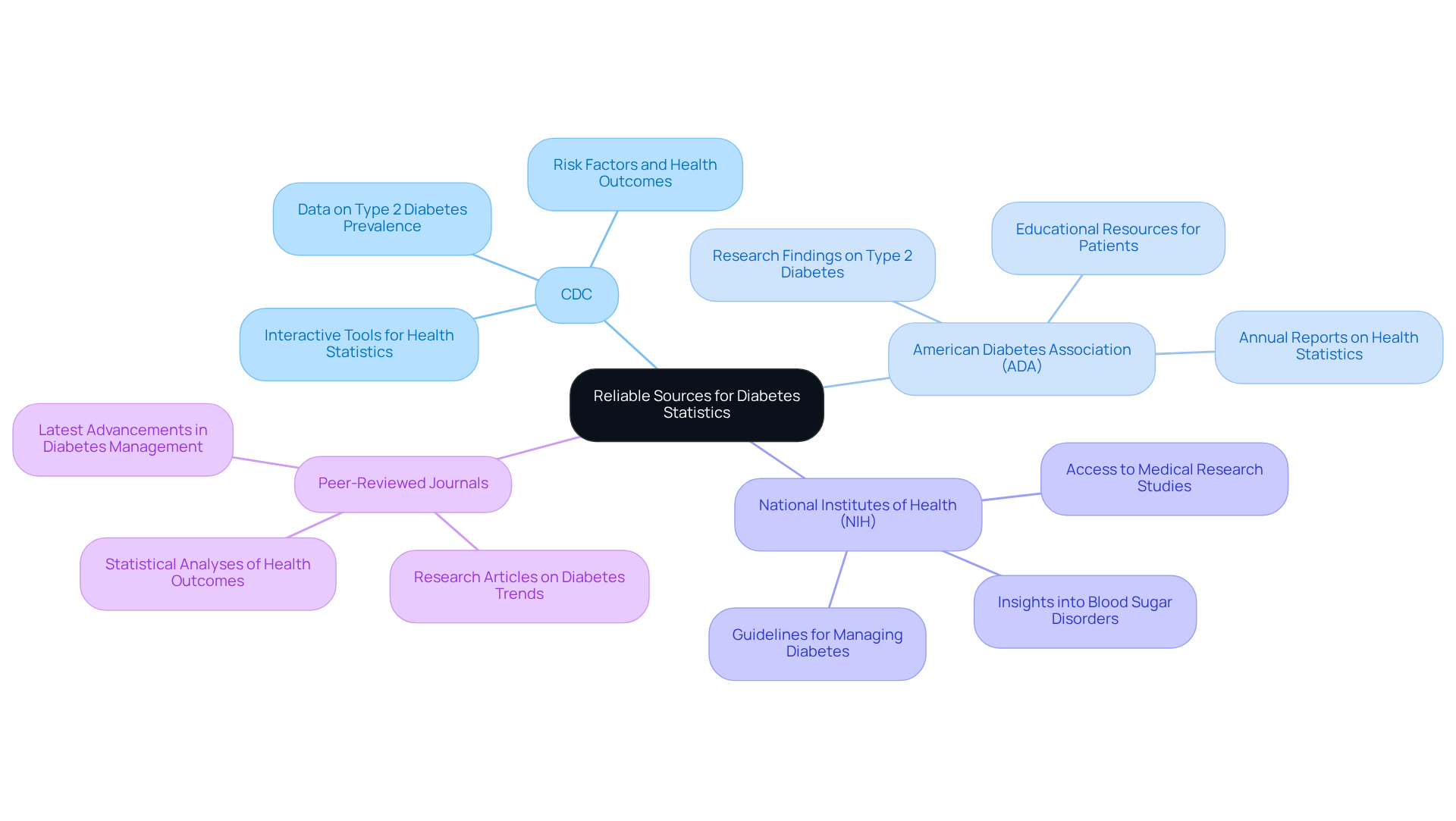Overview
Approximately 37.3 million Americans, or about 11.3% of the population, are living with type 2 diabetes. This condition represents 90-95% of all diagnosed diabetes cases in the U.S. It's understandable to feel overwhelmed by these statistics, especially if you or a loved one is affected. The growing prevalence of type 2 diabetes is particularly concerning among older adults, but it's increasingly seen in younger populations as well. This underscores the urgent need for effective management and preventive strategies. You're not alone in this journey, and there are resources available to help you navigate through it.
Introduction
The alarming rise in type 2 diabetes among Americans is not just a statistic; it reflects a growing public health crisis that impacts millions. With approximately 37.3 million individuals affected, this condition accounts for a staggering 90-95% of all diabetes cases in the U.S. This highlights an urgent need for awareness and intervention.
As the prevalence continues to escalate—especially among older adults and increasingly younger populations—it's understandable to feel concerned. What can be done to combat this epidemic and support those living with type 2 diabetes? You're not alone in this journey, and together, we can seek solutions and resources to address this pressing issue. We are here to support you every step of the way.
Define Type 2 Diabetes and Its Impact on Americans
Condition 2 is a chronic ailment that affects how the body uses insulin, leading to higher blood sugar levels. Unlike Diabetes 1, where the body doesn't produce insulin, individuals with Diabetes 2 may either produce insufficient insulin or experience insulin resistance. This dysfunction can lead to serious health complications, such as heart disease, kidney damage, and nerve issues.
As of 2021, about 38.4 million individuals in the U.S. were living with diabetes, prompting inquiries about how many Americans have type 2 diabetes, which accounts for 90-95% of these cases. This prevalence is particularly concerning among older adults, especially those aged 45 and older. The condition is closely linked to obesity, sedentary lifestyles, and poor dietary choices, making it a critical public health issue.
In 2022, the estimated total cost of diagnosed diabetes in the U.S. reached $412.9 billion, highlighting the economic burden on our healthcare system. It's understandable to feel overwhelmed by these statistics, but healthcare professionals emphasize the importance of early intervention and lifestyle adjustments to manage and prevent complications associated with Type 2 diabetes.
Real-world examples of effective management strategies include:
- Dietary modifications
- Regular physical activity
- Community support initiatives
These are essential for enhancing wellness outcomes. Remember, you're not alone in this journey; many resources are available to support you. The increasing occurrence of Type 2 diabetes emphasizes the critical need for public health programs that address how many Americans have type 2 diabetes, focusing on education, prevention, and comprehensive management. Together, we can work toward a healthier future.

Explore Current Statistics on Type 2 Diabetes in the U.S.
Recent statistics reveal how many Americans have type 2 diabetes, showing that approximately 37.3 million Americans—about 11.3% of the population—are living with this condition. Alarmingly, the second variety accounts for around 90-95% of identified cases. The Centers for Disease Control and Prevention (CDC) highlights a concerning fact: nearly 1 in 5 individuals with blood sugar issues remain undiagnosed. This emphasizes the critical need for increased awareness and understanding.
The steadily rising prevalence of Type 2 Diabetes, especially in adults aged 45 and older, raises the question of how many Americans have type 2 diabetes. Yet, it’s important to recognize that this condition is increasingly affecting younger populations, including children and adolescents. This trend is largely attributed to escalating obesity rates. In 2019 alone, 283,000 children and adolescents under 20 were diagnosed with this condition, highlighting concerns about how many Americans have type 2 diabetes. These numbers underscore the urgent need for effective management and preventive strategies nationwide.
These statistics indicate a societal wellness emergency that requires our immediate attention. It’s understandable to feel overwhelmed by these figures, but remember: you are not alone in this journey. Together, we can enhance care and education related to blood sugar management. Let’s take action to support one another and foster a healthier future.

Identify Reliable Sources for Diabetes Statistics
Finding reliable statistics on Type 2 Diabetes can feel overwhelming, but there are trustworthy sources that can help guide you through this journey. T2DSolutions is committed to providing comprehensive diabetes education, and here are some valuable resources to consider:
-
The Centers for Disease Control and Prevention (CDC) offers extensive data on how many Americans have type 2 diabetes, including risk factors and health outcomes. Their website features reports and interactive tools, such as the Data and Statistics page, allowing you to explore various health statistics and trends at your own pace.
-
American Diabetes Association (ADA): The ADA is a wealth of information, providing annual reports on health statistics and significant research findings. They highlight that 'Type 2 accounts for 90-95% of all cases of this condition,' which underscores the importance of understanding how many Americans have type 2 diabetes.
-
National Institutes of Health (NIH): The NIH conducts and supports medical research, offering access to studies and information related to blood sugar disorders. Their research often guides best practices in managing and preventing the condition, giving you insights into effective strategies.
-
Peer-Reviewed Journals: Academic journals such as Diabetes Care and The Journal of Clinical Endocrinology & Metabolism publish research articles that include statistical analyses and findings on sugar-related health trends. Staying informed through these publications is essential for understanding the latest advancements in blood sugar research and management.
By utilizing these sources, you can remain informed about the latest developments in diabetes research and management. Remember, you’re not alone in this journey. T2DSolutions aims to be a central hub for such information, supporting newly diagnosed patients as they navigate their path toward better health. We are here to support you every step of the way.

Conclusion
The prevalence of Type 2 diabetes among Americans is a pressing public health concern that truly requires our immediate attention. This chronic condition affects millions of individuals, posing significant health risks and economic burdens that can feel overwhelming. Understanding the statistics surrounding Type 2 diabetes is crucial for recognizing its profound impact on both individuals and society as a whole.
It's important to note that approximately 37.3 million Americans are living with Type 2 diabetes, which accounts for a staggering 90-95% of all diabetes cases. The alarming rise in diagnoses, particularly among older adults and increasingly among younger populations, underscores the urgent need for effective prevention and management strategies. Reliable sources such as the CDC, ADA, and NIH provide valuable insights and data to help us navigate this complex issue together.
Addressing the Type 2 diabetes epidemic is a collective responsibility that we all share. By prioritizing education, fostering community support, and implementing lifestyle changes, we can take proactive steps toward better health. Remember, it’s essential to stay informed and utilize trusted resources to combat this condition effectively. Together, through a concerted effort, we can pave the way to a healthier future for everyone. You're not alone in this journey, and we are here to support you every step of the way.
Frequently Asked Questions
What is Type 2 Diabetes?
Type 2 Diabetes is a chronic condition that affects how the body uses insulin, leading to higher blood sugar levels. Unlike Type 1 Diabetes, where the body does not produce insulin, individuals with Type 2 may produce insufficient insulin or experience insulin resistance.
What are the health complications associated with Type 2 Diabetes?
Serious health complications from Type 2 Diabetes can include heart disease, kidney damage, and nerve issues.
How prevalent is Type 2 Diabetes in the United States?
As of 2021, approximately 38.4 million individuals in the U.S. were living with diabetes, with Type 2 Diabetes accounting for 90-95% of these cases. The condition is particularly concerning among older adults, especially those aged 45 and older.
What factors contribute to the development of Type 2 Diabetes?
Type 2 Diabetes is closely linked to obesity, sedentary lifestyles, and poor dietary choices.
What is the economic impact of Type 2 Diabetes in the U.S.?
In 2022, the estimated total cost of diagnosed diabetes in the U.S. reached $412.9 billion, highlighting the significant economic burden on the healthcare system.
What management strategies are recommended for Type 2 Diabetes?
Effective management strategies include dietary modifications, regular physical activity, and community support initiatives.
What is the importance of early intervention for Type 2 Diabetes?
Early intervention and lifestyle adjustments are crucial for managing and preventing complications associated with Type 2 Diabetes.
What role do public health programs play in addressing Type 2 Diabetes?
Public health programs are essential for educating the public, preventing the onset of Type 2 Diabetes, and providing comprehensive management strategies to improve health outcomes.



